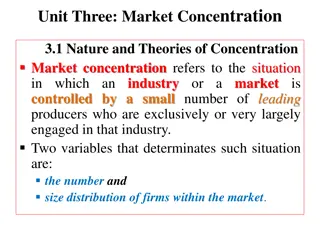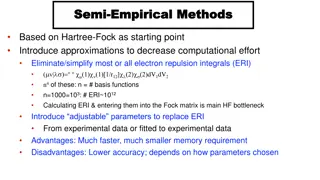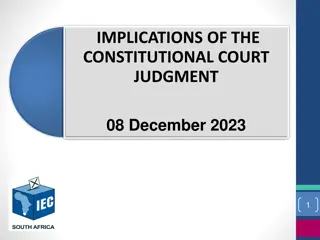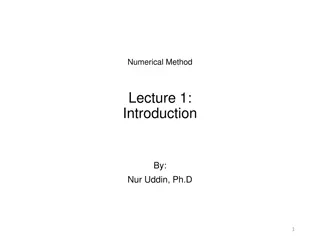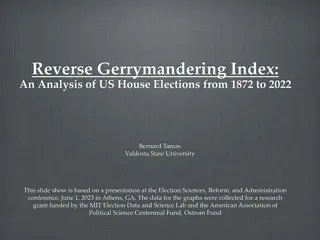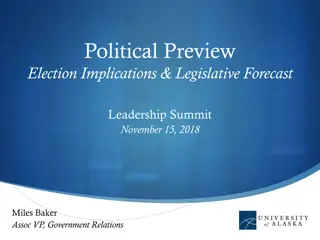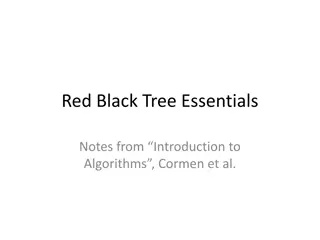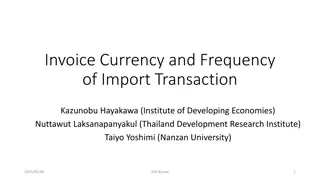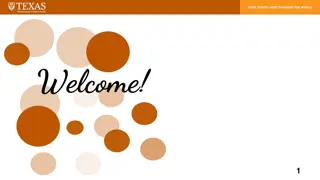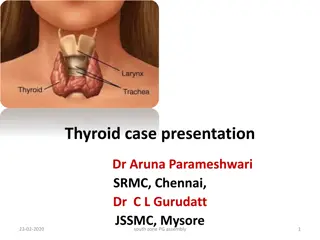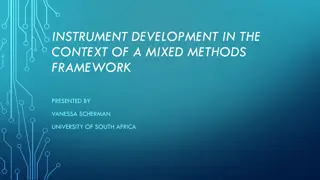Understanding Gerrymandering: Implications and Methods
The Supreme Court rulings in Wesberry v. Sanders (1964) and Reynolds v. Sims (1964) emphasized the need for equitable and periodically redrawn political districts to ensure fair representation and voting power for all citizens. Gerrymandering, the manipulation of district boundaries for partisan advantage, has a long history in the United States, utilizing tactics like cracking, packing, and stacking to either dilute or concentrate political influence. Ultimately, gerrymandering impacts electoral outcomes and the composition of legislative bodies, highlighting the importance of fair districting practices and the consequences of creating safe districts for incumbent politicians.
Download Presentation

Please find below an Image/Link to download the presentation.
The content on the website is provided AS IS for your information and personal use only. It may not be sold, licensed, or shared on other websites without obtaining consent from the author. Download presentation by click this link. If you encounter any issues during the download, it is possible that the publisher has removed the file from their server.
E N D
Presentation Transcript
The Supreme Court has said that (Wesberry v. Sanders 1964) that Congressional districts must be of approximately equal- sized populations. "as nearly as practicable one man's vote in a congressional election is to be worth as much as another's. Similar ruling for state legislatures in Reynolds v. Sims (1964). It follows that political districts must often be redrawn to reflect changes in population.
Gerrymandering is the drawing of political boundaries for partisan or narrowly political purposes. In 1812 the governor of Massachusetts, Elbridge Gerry, rearranged election districts in order to benefit the republican party. In an editorial cartoon, one of the districts, which was said to look like a salamander, was given a monster's head, arms, and tail and renamed a "gerrymander." Gerrymandering in the United States has been used both to dilute and strengthen the power of minorities. There are three main methods of gerrymandering, cracking, packing, and stacking.
District representation tends to be proportion to minority representation but only if district and minority lines coincide. Cracking splits districts to dilute one group s share of the vote. Figures from George Clark. 2004. Stealing Our Votes.
Packing puts as many of one group as possible into a super-district. They will win that district but at the price of losing other districts in which they are made the minority. E.g. take two districts in which group A has 55% of the vote in both districts and make it into two districts in which group A has 90% of the vote in one district and only 25% in the other.
Stacking, as in stacking the deck, is when district lines are redrawn to make minorities win in as many districts as possible. Similar to packing but the goal of packing is to concentrate a group to reduce its power while stacking concentrates a group to increase its power. Stacking often creates bizarre looking districts.
Gerrymandering is not just about who is represented. Perhaps even more importantly it s about who gets elected and reelected and reelected. Gerrymandering is used to create safe districts. Packing has been supported by a number of prominent minority politicians because even though it may dilute minority vote it makes their seat safe.
In 2012, Democrats won 51 percent of the popular House vote in Pennsylvania but only won 5 out of 18 House seats.A deficit of 4 seats. Pennsylvania's 7th district.
UnderSection 2 of the Voting Rights Act, states must create districts in which racial minorities have the ability to elect candidates of their choice, so-called majority-minority districts . At least if the minority is sufficiently large and geographically compact for this to be possible and if there is proof of racially polarized voting, meaning that whites and minority voters tend to vote for different candidates. The SC, however, has also ruled, beginning with Shaw v. Reno (1993), that racial districting is a violation of the Equal Protection Clause of the 14th amendment.! Upshot is that racial reasons cannot be the predominant factor in redistricting.
Texas 6th Texas 30th
In January of 2018, a three court panel of Federal judges ruled that a North Carolina redistricting plan was unconstitutional and had been motivated by invidious partisan intent, so much so that it violated the 14th Amendment s guarantee of equal protection. What to do?
Use an algorithm to maximize compactness while keeping districts of similar- sized population.
Rather than try to smooth districts by geography an alternative approach tries to eliminate the partisan incentive to gerrymander. Suppose we have the situation at right. Republicans and Democrats have equal number of voters but Republicans win 3 out of 4 seats due to packing and stacking.
Note that in this scenario 4 out of 6 (66%) Democrat votes have been wasted but no Republican votes (0%) have been wasted. Efficiency Gap=66%- 0%=66% Some votes will always be wasted but it is possible to draw boundaries to keep the waste symmetrical, i.e. no partisan bias.
Create large, multi-member districts, and using a different voting system such as cumulative voting. Cumulative voting e.g. a state has 5 representatives. Each voter gets 5 votes which they can allocate in any way that they want. 1 vote each to 5 candidates. 5 votes to 1 candidate etc. Cumulative voting allows for self-defined minorities.



